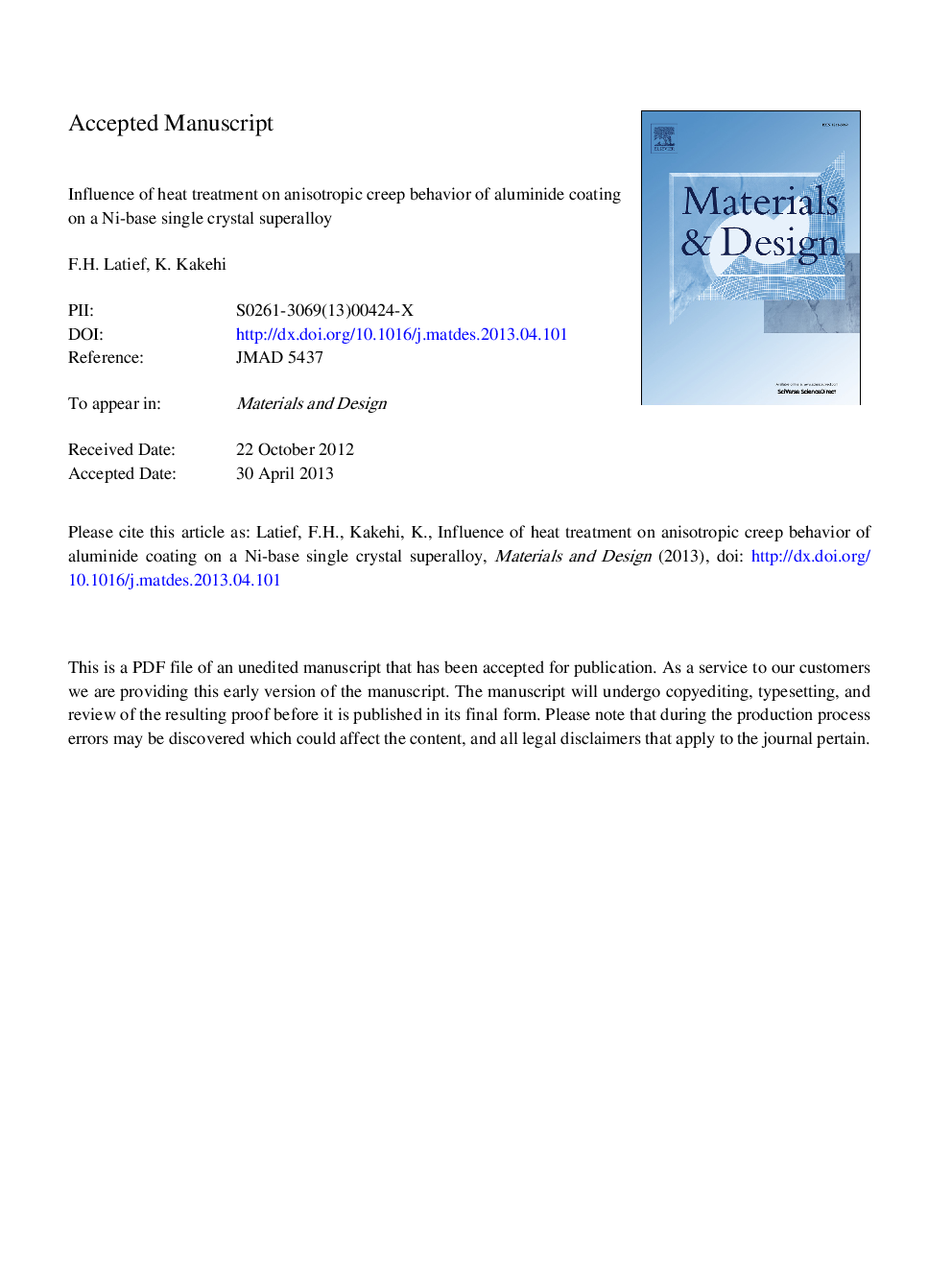| Article ID | Journal | Published Year | Pages | File Type |
|---|---|---|---|---|
| 7221108 | Materials & Design (1980-2015) | 2013 | 35 Pages |
Abstract
The influence of heat treatment on creep behavior of aluminide coating on a Ni-base single crystal superalloy with different surface orientations was examined. The specimens were coated by pack aluminizing treatment at 1000 °C for 5 h under argon environment. The coated specimens were then tested by the tensile creep test at a temperature of 900 °C and a stress of 320 MPa. To determine the effect of aluminide coating, the bare specimens were also tested. The aluminizing treatment decreased the creep strength of Ni-base single crystal superalloy. The solution heat treatment procedures had a great impact on the creep behavior of Ni-base single crystal superalloy. The combination of solution treatment and subsequent double aging treatment was effective to improve the creep strength of Ni-base single crystal superalloy because of more regular the shape of γⲠprecipitates and more homogeneous distribution of γⲠprecipitates. In addition, the {1 0 0} specimens showed a better creep lives than those {1 1 0} specimens both in aluminized specimens and bare specimens. The anisotropic creep behavior was primarily induced by the different arrangement of {1 1 1} ã1 0 1ã slip systems between the two surface orientations of the specimens. The difference in creep rupture lives between {1 0 0} and {1 1 0} side-surface specimens was more pronounced in the specimens STA than in the specimens A because of homogenization of the γ/γⲠmicrostructure promoted the deformation by {1 1 1} ã1 0 1ã slip system which leads to anisotropy of creep behavior. Moreover, the change in microstructures was also considered as one of factors for the decrease of creep life. Besides, the formation of TCP phase, the depth of TCP phase penetration and the gradient of hardness values in the coating to the substrate regions would be additional factors to clarify the anisotropic creep behavior in aluminized Ni-base single crystal superalloy.
Related Topics
Physical Sciences and Engineering
Engineering
Engineering (General)
Authors
F.H. Latief, K. Kakehi,
